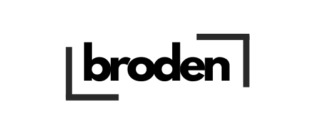TL;DR: What GroupM’s Restructure Means for You
-
It’s a sign of the pressure to prove ROI, reduce cost, and integrate tech.
-
Efficiency alone isn’t differentiation. Creativity must scale across every touchpoint.
-
Agencies need new operating models that balance data, delivery, and distinction.
-
CMOs should reassess their partners, tools, and internal readiness — now.
Introduction: Navigating Change in the Agency World
As we move into a more AI-driven and cost-conscious 2025, the structural changes at GroupM — one of the world’s largest media networks — represent more than internal reorganisation. They reflect broader pressures across the marketing services world: to evolve, streamline, and redefine value in a landscape increasingly shaped by automation, performance metrics, and client scrutiny.
Whether these shifts spark excitement or concern, they mark a pivotal moment for the agency model. This isn’t about being for or against the changes. It’s about asking: what do these moves tell us about the future of agencies — and what should marketers do in response?
This Isn’t the First Agency Reckoning
This isn’t the first time agencies have been challenged to adapt. From the rise of digital in the early 2000s to the in-housing and performance-led shifts of the 2010s, the ground has moved before.
What’s different now is the speed and depth of transformation. AI doesn’t just streamline tasks — it redefines roles, compresses timelines, and changes what clients value. The question isn’t whether agencies will adapt, but how — and what will be lost or gained in the process.
What GroupM’s Restructure Tells Us
The traditional agency structure — often siloed, process-heavy, and built for a different era — is under pressure. GroupM’s new model leans into operational integration, AI-driven decision-making, and global consistency. It’s an evolution designed to deliver efficiency, clarity, and speed at scale.
For many in-house leaders, this will be welcome. Especially amid increasing demands from CFOs to prove ROI, and rising expectations around measurable outcomes. But the agency world must confront a deeper question: does increased efficiency always lead to better outcomes — or does it risk uniformity?
The Human Impact: Roles Are Being Rewritten
These changes go far beyond org charts and reporting lines. They touch the very core of what agencies do and how teams operate.
For those who’ve built careers in legacy agency models, this shift might feel unsettling. Roles are blurring. Teams are being asked to work across strategy, execution, data, and creative — often with fewer resources and faster turnaround times.
And it’s not just agency-side. In-house teams are being pushed to adapt too — running sprint-based campaigns, integrating tech stacks, and reacting faster to platform changes, all while trying to maintain brand consistency.
For agency leaders, there’s a human dimension to consider: morale. When teams feel like their creative value is being replaced by automation or reduced to delivery speed, retention becomes harder. CMOs and agency heads alike need to communicate clearly: AI is here to amplify great talent — not erase it.
This is more than change management. It’s a rewiring of how marketing functions — and who leads the charge.
The Differentiation Dilemma: Creativity Across Every Touchpoint
If every agency adopts the same AI-driven tools, the same optimisation logic, and the same metrics — how will they differentiate?
Efficiency is no longer a competitive advantage. It’s a given.
What’s missing — and what will define the next generation of successful agencies and brands — is creativity. But not just in the traditional sense.
Creativity isn’t just the domain of designers or brand strategists. It’s how you answer a brief, write a subject line, structure a media plan, or present performance data.
This is the real opportunity: to operationalise creativity, not just reserve it for big ideas. The most successful agencies won’t just optimise. They’ll make every touchpoint an extension of a clear, cohesive, and original creative vision.
In a world of AI-led uniformity, creativity is how you signal there’s a human behind the brand.
Creative Tech Stacks Will Be the New Differentiator
Differentiation won’t just come from creative ideas — it will come from how those ideas are executed through technology.
Agencies that develop creative tech stacks — unique blends of AI, workflow automation, content engines, and measurement tools — will gain structural advantage. Not because of the tools themselves, but because of how they’re orchestrated to deliver originality at scale.
The question to ask isn’t “What AI tools are you using?”
It’s “What can you do with them that no one else can?”
What Marketers Should Do Now
For CMOs, marketing directors, and agency leaders, the lesson here isn’t to panic — it’s to plan. Now’s the time to rethink how your business defines value, and whether your team structures, tools, and partners support that definition.
Ask yourself:
-
Are you ready for an AI-assisted future — without losing your human edge?
-
Are you measuring what matters, or just what’s easiest to track?
-
Are you building systems that allow creativity to scale across every customer touchpoint?
If the answer to any of those is unclear, now’s the moment to re-evaluate.
Final Thought: Evolution, Not Extinction
The agency model isn’t disappearing — but it is evolving. The winners won’t be those that simply consolidate or optimise faster. They’ll be the ones that combine efficiency with originality, and operational rigour with creative courage.
In this new landscape, consistency matters. But so does distinctiveness. And the only way to achieve both is to ensure that creativity — in the broadest sense — is embedded into everything you do.
If your brand sounds like everyone else — what exactly are you paying for?
📞 Let’s Talk
If you’re navigating these shifts and want to future-proof your marketing setup, I’d love to have a conversation.
Speak to a strategist who understands both the pressures and the possibilities.



